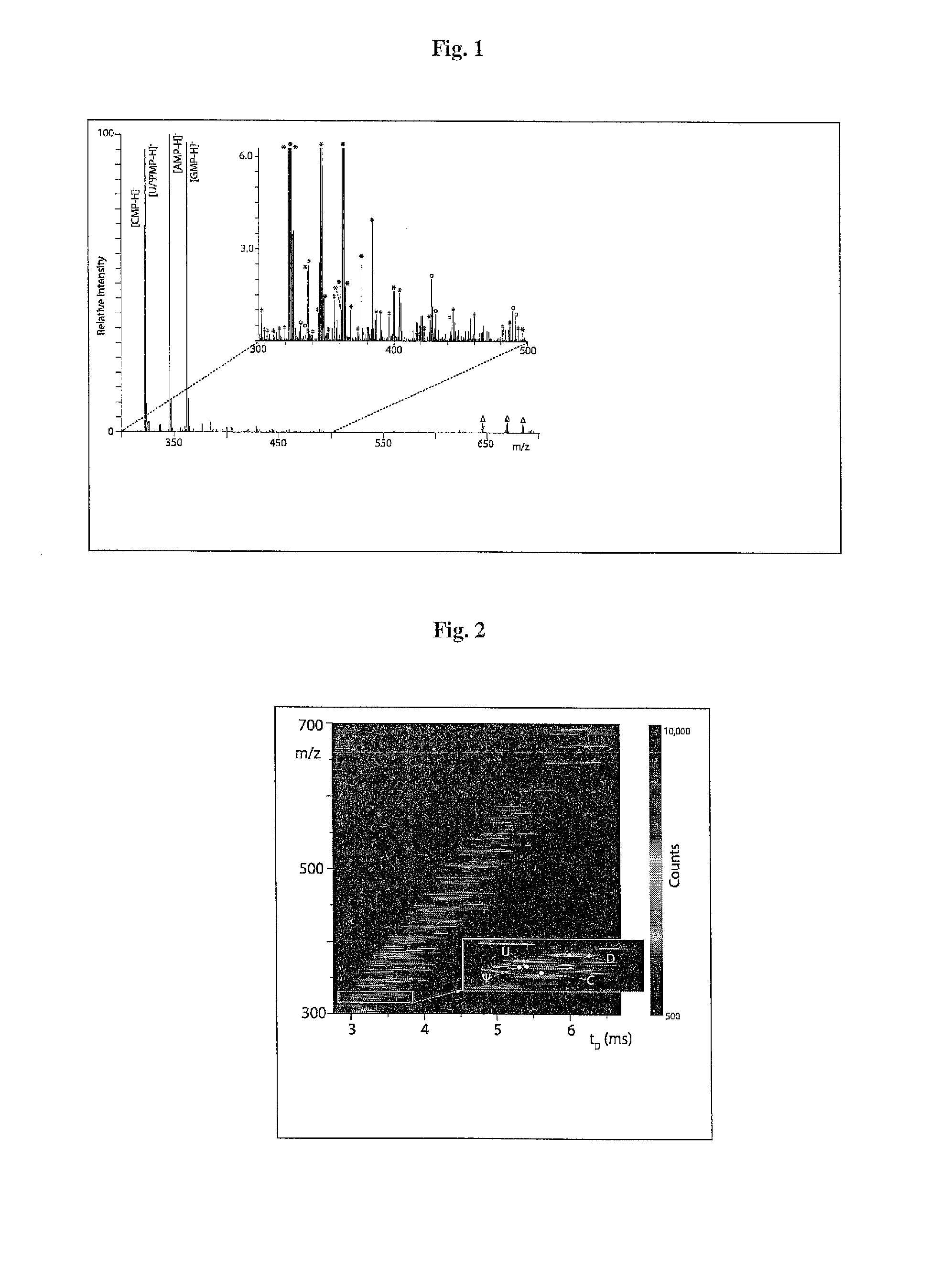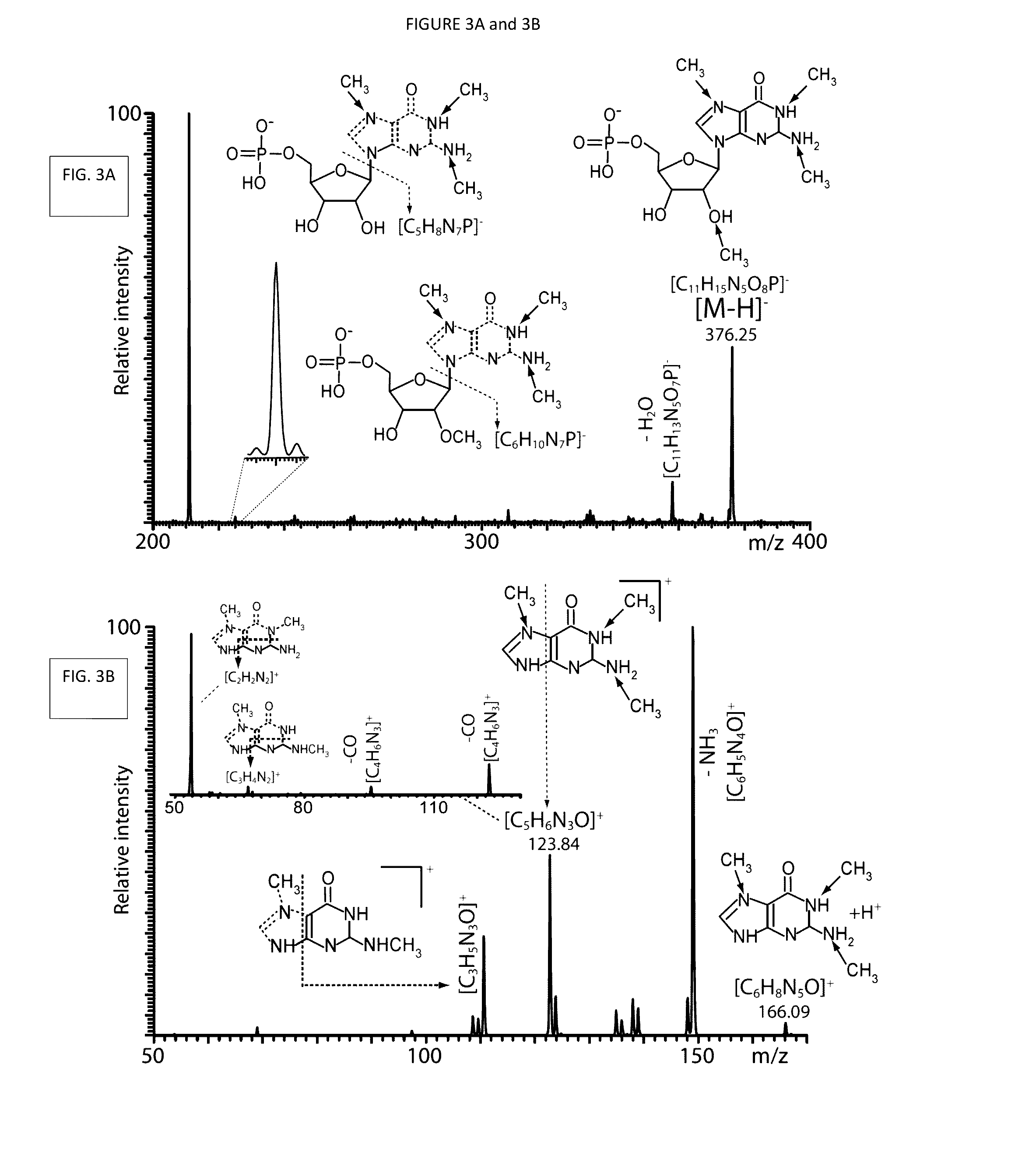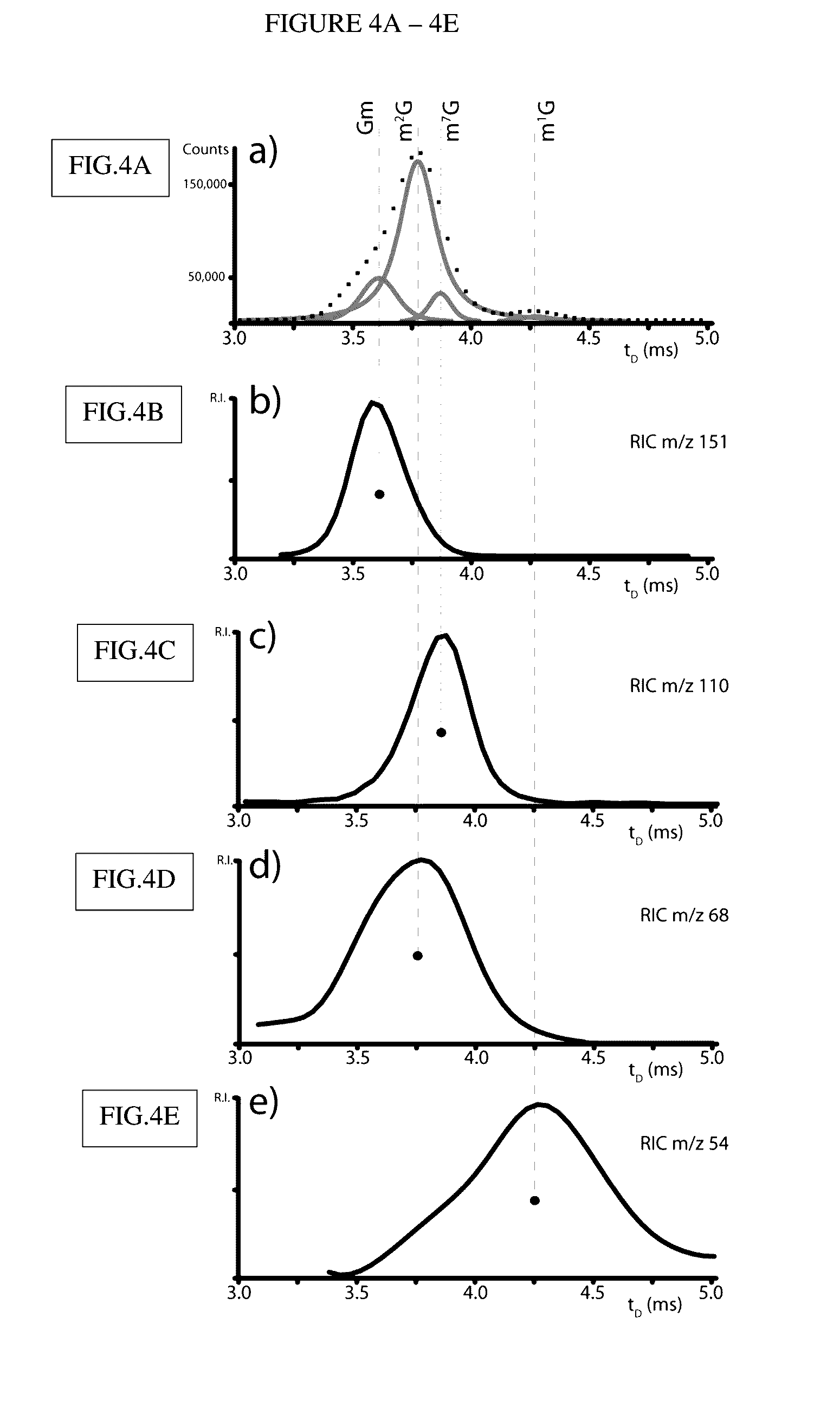Profiling chemically modified dna/rna units for disease and cancer diagnosis
a technology of chemical modification and dna/rna, which is applied in the field of profiling variant nucleic acids within cells, can solve the problems of affecting the diagnosis of cancer, affecting the clinical diagnosis, etc., and achieves the effect of facilitating the analysis of very complex mixtures
- Summary
- Abstract
- Description
- Claims
- Application Information
AI Technical Summary
Benefits of technology
Problems solved by technology
Method used
Image
Examples
example i
[0191]The following describes exemplary methods and materials used during the development of the present inventions.
[0192]A. Preparation Of Cellular Extracts.
[0193]Saccharomyces cerevisiae strain BY4741 was grown in yeast extract, peptone, dextrose (YPD) and synthetic complete (SC) media. Cell suspensions were streaked onto YPD agar plates and incubated at 30° C. overnight. Five individual colonies were selected from each plate and placed into individual tubes containing 6 mL of either YPD or SC medium. Growth tubes were incubated at 30° C. with 200-rpm gyration. Optical density at 600 nm (OD600) was monitored on a ThermoFisher Scientific (Waltham, Mass.) Nanodrop 2000c spectrophotometer until a value slightly greater than 0.3 units was achieved. Each liquid culture was diluted to a final 0.3 OD600 to ensure that the tubes contained comparable “cell concentrations” (i.e., number of cell per volume unit). A 3-mL aliquot of each culture was centrifuged at 6000 g for 5 min to obtain pe...
example ii
[0205]The Following Example Describes Direct Infusion Analysis of Cellular Nucleotide Mixtures.
[0206]A sensible but deceptively challenging way to reduce sample losses and analyte bias consists of reducing the number of sample-handling steps included in a prospective experimental workflow. Classic phenol-chloroform extraction was used to simultaneously achieve cell lysis and rapid isolation of nucleic acid components (Chomczynski and Sacchi, 1987), followed by digestion into separate mononucleotides (Crain, 1990b). Owing to the absence of high-resolution separation steps, the final samples were anticipated to contain the desired mononucleotide analytes and also unrelated cellular components carried through the entire workflow (Scheme 1, see FIG. 9A-9B, bottom). The complexity of these types of mixtures can be immediately appreciated by examining representative data obtained from a digest of total RNA from a sample of S. cerevisiae grown in yeast extract, peptone, dextrose (YPD) medi...
example iii
[0208]The Following Example Describes Identification of Modified Ribonucleotides.
[0209]The vast majority of the detected signals were readily assigned with the aid of database searching. Initial data reduction followed a conservative approach that eschewed the application of a pre-determined threshold to eliminate background noise on the basis of signal intensity, but relied instead on the detection of recognizable isotopic envelopes to differentiate signal from noise. This task employed a deconvolution algorithm included in the instrument's data system, which was designed to infer the charge state of any given signal from the respective isotopic distribution (Bushberg et al., 2012). When the ESI-MS data shown in FIG. 1 were processed, the filtering operation returned 1,206 of the 14,639 entries contained in the initial mass list, which were subsequently employed for database searching.
[0210]The searches were performed against a database specialized on RNA modifications, as well as ...
PUM
| Property | Measurement | Unit |
|---|---|---|
| diameter | aaaaa | aaaaa |
| ionizing voltage | aaaaa | aaaaa |
| ionizing voltage | aaaaa | aaaaa |
Abstract
Description
Claims
Application Information
 Login to View More
Login to View More - R&D
- Intellectual Property
- Life Sciences
- Materials
- Tech Scout
- Unparalleled Data Quality
- Higher Quality Content
- 60% Fewer Hallucinations
Browse by: Latest US Patents, China's latest patents, Technical Efficacy Thesaurus, Application Domain, Technology Topic, Popular Technical Reports.
© 2025 PatSnap. All rights reserved.Legal|Privacy policy|Modern Slavery Act Transparency Statement|Sitemap|About US| Contact US: help@patsnap.com



